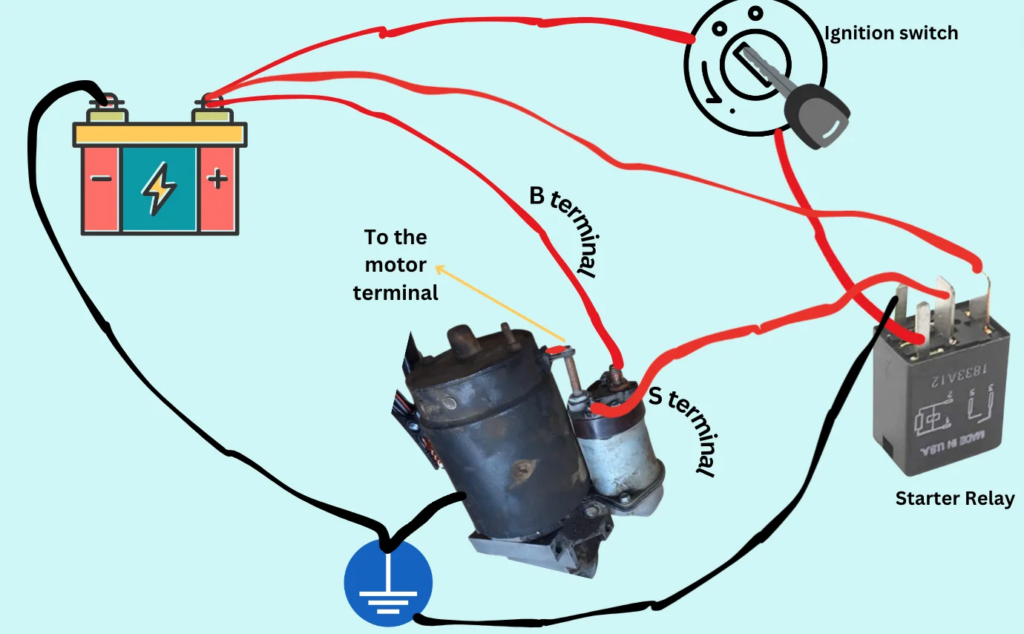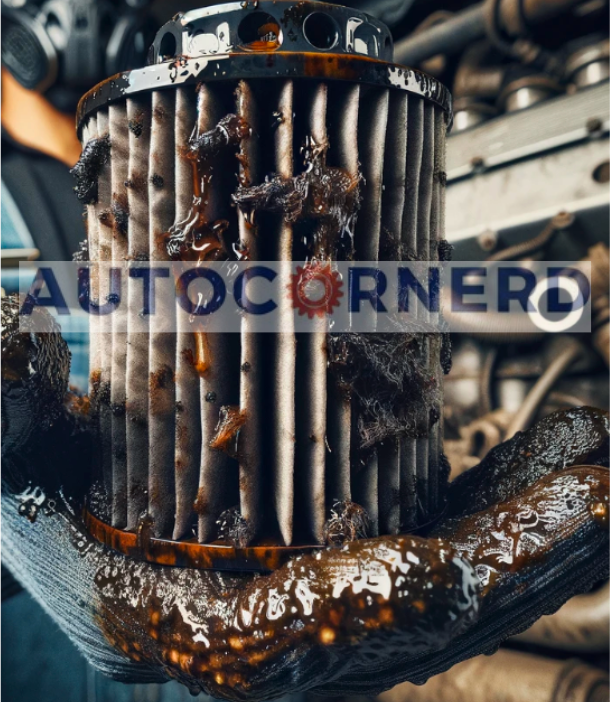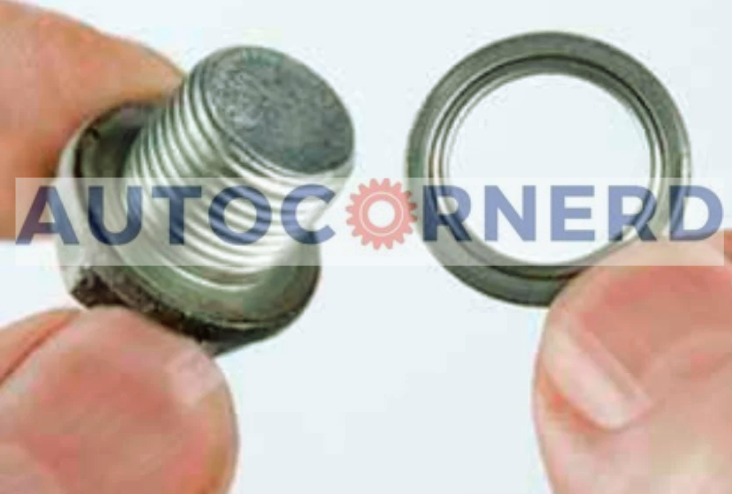Car Won’t Start After Changing Oil: 8 Potential Causes
A car not starting after an oil change often indicates a weak battery, stuck starter, or wrong oil viscosity. If the car cranks but won’t start, check for fuel pump whirring noise. Stripping ground wire insulation during the oil change can short the electrical system and prevent car starting. Proper diagnosis of causes like battery, starter, oil viscosity issues or damaged wires from oil change service.
Nothing kills your day like turning the key only to hear dead silence from your engine. You just changed the oil yourself to save a few bucks, but now your car won’t start and you’re worried you messed something up.
Don’t panic. Most causes of a no-start after an oil change are easy fixes. In this guide, we’ll walk through the common culprits so you can get back on the road.
You can also read my guide on How far can you drive on minimum oil.
- Check battery voltage under load when cranking. Replace if under 9.6V.
- Starter issues can prevent starting after oil change. Hammer stuck starter while cranking.
- Use same oil type as before – conventional or synthetic.
- Don’t overfill oil. Crankshaft foaming oil causes no-start.
- Replace oil filter seal during oil change. Don’t over tighten.
- Replace drain plug seal when changing oil.
- Fuel pump failure can make car crank, not start after oil service.
- Check wires near oil filter during service. Damaged insulation causes problems.
- If engine light on, check crankshaft sensor wiring after oil refill.
My Personal Experience With Car Not Starting After Oil Change
Once my friend asked me to change the oil in his Honda Civic. I drained the old oil, changed the filter, and added new oil.
But when we tried starting it, the engine wouldn’t turn over. I checked under the hood and realized in my haste I had forgotten to properly tighten the battery cable clamps after accessing the oil filter.
The loose connection prevented enough power from reaching the starter. I tightened down the battery cable clamps properly and made sure they were corrosion-free. The car then cranked normally when turning the key.
Simply ensuring a solid battery connection fixed the no-start problem caused by my oversight.
Similarly, I experienced the same issue with my Toyota Camry that wouldn’t start after I changed the oil myself. I checked the battery voltage and it was low at 9.5V. So, I cleaned the battery terminals, charged the battery, and tested it again while cranking the engine.
The voltage still dropped below 10V. I realized the battery was too weak to start the car, so I replaced it with a new one from the auto parts store.
After installing the new battery, the car started up normally. Checking the battery voltage under load allowed me to diagnose the real issue. Replacing the weak battery fixed the no-start problem.
Can An Oil Change Stop Your Car From Starting?
When your car doesn’t start after oil change, it’s understandable to suspect the oil change might be the culprit. However, in most cases, an oil change alone won’t directly cause your car to not start.
There are some related issues that can occur during an oil change which could lead to startup problems if not addressed.
If your engine is leaking oil, make sure to read my guide on that topic.
These days, modern GDI (Gasoline Direct Injection Engines) have much tighter tolerances compared to older engines.
Moreover, due to GDI technology, synthetic motor oils are preferred in modern engines as they have special additives to maintain their viscosity at high temperatures, keep the engine clean and prevent any engine sludge. Read my guide on best oil for high-mieage engines.
Also, if you have not correctly installed an oil filter after an oil change, it would also cause some issues while starting a car. I have explained this in my guide on 5.3L engine common oil leaks.
Moreover, extended oil change intervals can lead to sludge in the engine. The new oil may loosen and shift sludge deposits, clogging oil channels.
Causes Of Car Not Starting After Oil Service
Based on my experience and asking several people who had faced car starting issues after oil changes, here are the most common causes of the car failing to start following oil change.
- Dead Or Weak Battery
- Bad or Stuck Starter
- Wrong Engine Oil
- Overfilling Of Engine Oil
- Clogged Oil Filter
- Damaged or Improperly Fitted Drain Plug Of Oil Pan
- Damaged Fuel Pump
- Damaged Wiring To The Ground or Sensors
You can also read my guide on check engine light after changing oil and how to reset it.
1. Dead Or Weak Car Battery After Oil Change Prevents Engine Crank
A dead or weak battery does not have to do anything with the oil change, but it is the first thing you should check if your car is not starting.
Your car may be suffering from a weak battery. It could be anything from a bad battery connection, to a worn or loose battery terminal, to a weak battery. A weak battery can still display lights on the dashboard.
Try jump-starting your car. If it starts, there is an issue with the car battery. Also, check if battery terminals are clean and properly fitted.
Now, to test a car battery, people make a big mistake. They don’t test the battery under a load. Without load, a voltage test on the battery can give perfect volts i.e. around 12V. But, to check the health of the car battery, you have to test it under load as the voltage across the battery terminals significantly drops when it supplies current to the starter.
Have someone try to crank a car and you should check its voltage using a voltmeter. If it is less than 9.6V, you should change your car battery.
2. Stuck Or Faulty Starter Motor Fails To Turn Engine Post Oil Drainage
Sometimes, a bad starter also causes a car not to start. You were wondering if the starter hasn’t anything to do with the oil change procedure, then why I am mentioning it here?
Well, the starter can get stuck sometimes, which can prevent the car from starting. It is a usual issue that can happen anytime.
So, first, have someone hammer a starter while you are trying to crank a car. One user had faced a car not starting issue. His car started again after hammering the starter.
If the car still doesn’t start, you have to check the starter connections and pull out the starter to test it.

You can read my guide on car starting intermittently. I’ve explained the diagnostic procedure of the starter and its connections in detail in that guide.
3. Incorrect Viscosity Oil Leads To No Start After Maintenance
Using a wrong engine that is not recommended by the car manufacturer also causes failure in starting the car after an oil change.
In my guide on the best oil for 3.5 Ecoboost, I’ve only listed the motor oils that meet the specifications of the oil recommended by Ford.
If your engine previously used conventional motor oil in your engine, you should use conventional motor oil. If it uses synthetic motor oil, you should use synthetic one.
Your car can also face issues of low oil pressure at idle. You can read my guide on that topic.
Remember that even if synthetic motor oil and conventional motor oil have the same weight, they have different flow characteristics and lubricating and cleaning abilities due to differences in additives and the nature of the base oil.
Moreover, always prefer the recommended weight of the motor oil. Gone are the days when thicker oils like 10w30 or 15w30 were used in the engines. Now, engines have tighter tolerances.
One person added 15w40 oil to the engine. 15w40 is pretty much thicker at colder temperatures (when the engine is being started for the first time) than the 5w40 motor oil.
The oil pump has to work much harder to deliver 15w40 from the crankcase to the engine oil galleries when you’re trying to start the engine.
Engine oil, which is thicker during cold starting, makes it hard for the crankshaft to turn over and thus, prevents the engine from starting.
So, using motor oil of different weight will cause your car not to start. You can read my guide on SAE30 vs 10w30 to understand the viscosity of oil and its pumpability.
4. Overfilling Of Engine Oil Forming Air Bubbles
If the engine is overfilled with oil, it can cause failure in starting the car. This is because when engine oil is overfilled, the fast rotating crankshaft comes in contact with the oil. This will cause the oil to foam. This is detrimental to the engine as it pushes air bubbles into the engine.
Moreover, overfilling of oil can also cause oil to leak through the valve cover seal and gasket due to excessive oil pressure.
As a result, the oil will enter the combustion chamber and damage the spark plugs. Your engine seals and gaskets can also damage if the oil will be forced to pass through them.
When changing oil, I would not recommend you simply pour new engine oil into the old oil without draining it.
The old oil eventually turns bad when the time arrives to change the engine oil. While changing oil, allow the old oil to fully drain in an oil-safe container.
That old oil has all sorts of impurities, from running throughout the car to lubing the moving components within your engine.
When adding the oil, always check the owner’s manual for the recommended oil capacity (quarts) of an engine.
After you change the oil, make sure to check its level using the dipstick. Park a car on flat ground.
After a few minutes of filling the oil, take out the dipstick and clean it with the towel. Reinsert the dipstick and take it out. The oil should be lined up with the full marking on the tip of the dipstick.
5. Clogged Oil Filter Restricting Oil Circulation

Vehicle manufacturers recommend changing the oil filter when you change the oil.
The oil filter collects the dirt, sludge, and other impurities that enter the oil stream. It prevents these contaminants from clogging the engine, which can cause premature engine failure.
Make sure to only install the OEM oil filter as the oil filter should have a certain size and shape. OEM oil filters are designed to install properly and handle the oil pressure in the system. Cheap aftermarket oil filters can damage too early.
When installing a new oil filter, make sure it has only one seal with which the oil filter comes. Look for the oil filter seal being stuck on the engine where the filter goes. If there are two seals, the oil filter would not tighten properly.
Also, make sure to lightly lubricate the seal of the oil filter before installing it. Moreover, if the oil filter is installed too tightly, it will also cause damage to the gasket seal and increase the chances of an oil leak. The manufacturer usually recommends certain torque requirements to tighten the oil filter. You should follow them.
6. Damaged or Improperly Fitted Drain Plug Of Oil Pan

If the drain plug of the oil pan is damaged or leaking, the engine won’t start after an oil change. The drain plug of the oil pan creates an air-tight seal so that oil does not leak through it and air bubbles do not form inside the oil pan.
It is generally recommended to also replace the washer (Seal) of the drain plug whenever you drain out the old oil as the seal of the drain plug gets damaged due to the oil sludge. It is difficult to find a suitable seal for the drain plug. The metal drain plug has usually a sealing metal washer instead of a rubber seal.
So, I always get a new drain plug whenever I change the oil of my car. Like an oil filter, there are certain torque requirements to tighten a drain plug using a torque wrench. You should follow them.
7. Damaged Fuel Pump Restricting Sufficient Fuel Flow
Again, the failure of the fuel pump isn’t related to an oil change procedure in any way. If your car cranks but does not start after replacing oil, the fuel pump of your engine could malfunction.
The fuel pump runs initially to pressurize the fuel line so that the fuel injector can inject the fuel into the engine. The easiest way to see whether your fuel pump is running or not, turn on the ignition key. As soon as you turn on the ignition key and you hear a hum or whirring noise coming from the back of the car or under your gas tank for a few seconds, it means the fuel pump is running.
Try to take help from someone while you will be doing this. First, check the fuel pump relay and then check the fuel pump.
If you don’t hear any sound, the chances are that the fuse or relay of fuel pump has gone bad. So, you should first check that out.
8. Damaged Wiring To The Ground or Sensors
In some engines, it becomes trickier to remove the oil filters. You have to go down to the engine bay to use special tools to remove the oil filter.
During the removal process of the oil filter, any wire can damage, which affects the electrical connection of the engine.
So, you have to carefully check that the insulation of any wire, that connects to the engine ground, is not damaged. You can find the ground locations of your engine in your manual.
You should also wirings to different sensors of the engine as the PCM needs readings from different sensors for optimized engine performance.
If you see a check engine light on the dashboard when the engine won’t start after an oil change, use OBD2 scanner tool to find the trouble code related to any sensor. Usually, a crankshaft sensor is located near the oil filter. You should first check its connection.
Final Thoughts On Car Not Starting After Oil Change
Sometimes cars decide not to start after getting that fresh oil put in. More often than not, it turns out the no-start has nothing to do with the oil itself or the work done. Things like a battery on its last legs, a starter that’s given up, or a fuel pump that faded out can leave you calling roadside assistance instead of cruising down the highway.
But oil changes aren’t always innocent. Putting in the wrong thickness of oil, overfilling the crankcase, or messing up something with the drain plug or filter can keep an engine from turning over. Checking battery voltage, starter operation, oil level and viscosity, and plugs and wires will help track down the real culprit.
If it does end up being oil-related, adjusting the level or switching to the manufacturer’s recommended viscosity will typically get you back on the road. And taking the time to do complete checks and procedures during oil changes reduces the chances of a breakdown later on.
First Hand Experiences Shared By Users In Different Communities
Our team conducted research across various online communities, forums, and subreddits to gather user comments and opinions on “car not starting after oil service”.
User 1 says:
Recently did an oil change on my Accord, and it wouldn’t start after. Thought I messed up, but a buddy suggested checking the battery. Turns out, the terminals were loose. Tightened them, and it fired right up. Who would’ve thought?
User 2 says:
Had a no-start issue with my Camry post oil change. First thought was the oil filter. Rechecked, and it was the wrong spec! Swapped it with the correct one, and boom, problem solved. Always double-check your parts.
User 3 says:
Changed oil in my Ram, then no joy on starting. Thought it was the starter, but it was actually a blown fuse. Replaced it, and it started right away. Always check the simple stuff first.
User 4 says:
My Altima wouldn’t start post oil change. Checked the oil pressure sensor, as I heard they can be sensitive. It was loose. Tightened it up, and it started. Sometimes it’s the little things!
How Did You Fix Your Issue Of Car Not Starting After Oil Change? Please Vote.
[yop_poll id=”12″]
